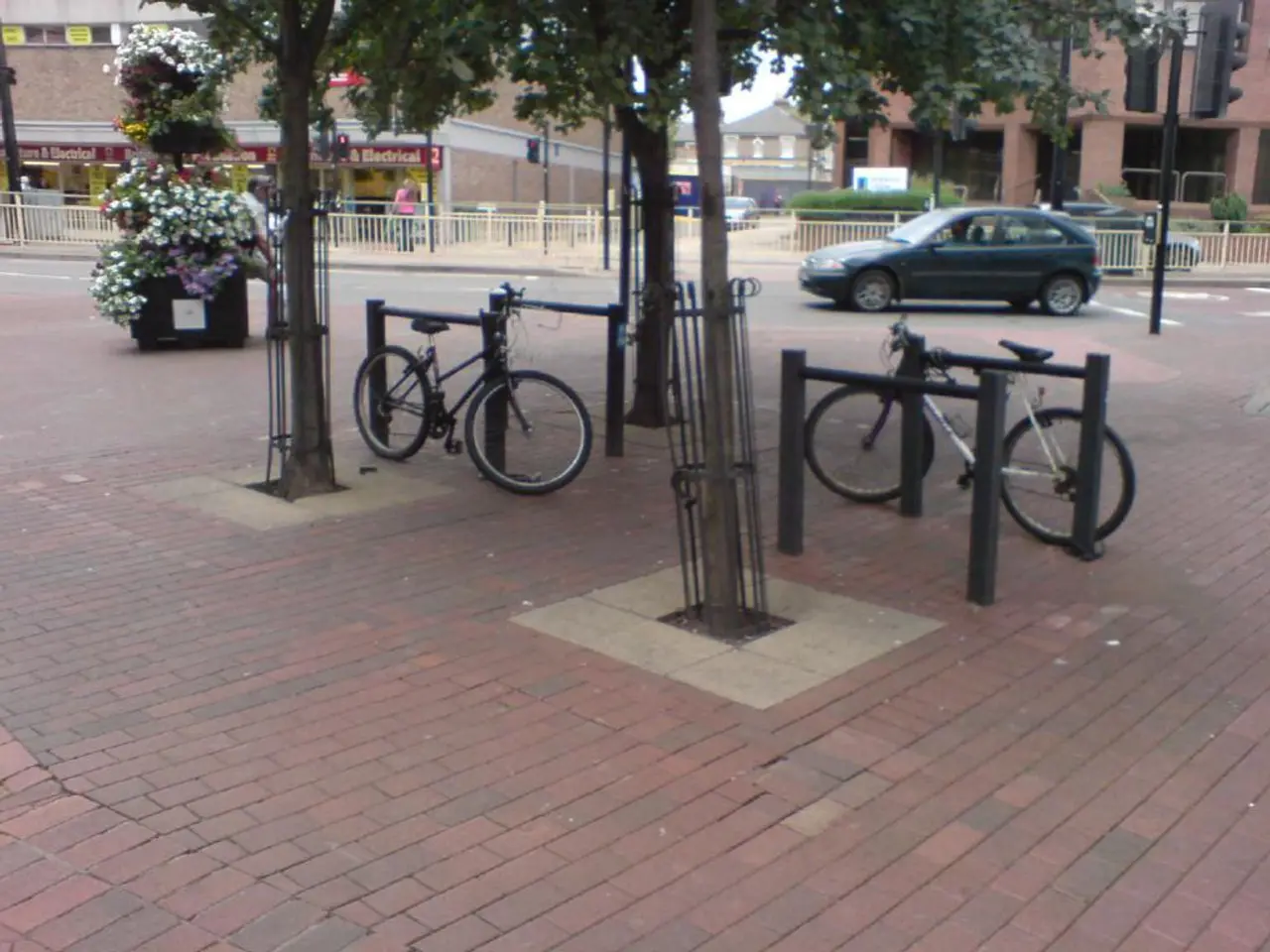City infrastructure could transform, using parked electric vehicles (EVs) and water heaters, to create expansive, versatile power storage systems akin to massive batteries.
In a groundbreaking study conducted by the Australian National University (ANU), the potential benefits of distributed energy storage (DES) in fully electrified cities have been highlighted. The study focuses on the Australian Capital Territory (ACT), a region that already runs on 100% renewable electricity and aims to reach net-zero emissions by 2045 through the switch to electric transport and heating.
The study reveals that each resident in a fully electrified city could manage energy equivalent to several home batteries, transforming urban infrastructure into a flexible tool for grid stability. This is made possible by strategic load shifting of electric vehicle (EV) charging and hot water heating, which helps reduce infrastructure stress and improve grid stability by redistributing electricity demand from peak times to off-peak periods.
By simply shifting the timing of electric vehicle charging and hot water heating, individuals could move about 5 kWh of electricity to off-peak periods. This strategic load shifting could have significant implications for the grid. Without proper coordination, increased electric loads from vehicles and heating systems could drive peak electricity demand up by more than 30 percent, necessitating costly upgrades to the power network. However, by strategically shifting just half of this demand to off-peak hours, the peak demand increase could be halved, easing pressure on infrastructure and improving the use of rooftop solar energy, especially in the evening.
The study uses detailed mapping tools to track energy use hour by hour and suburb by suburb. These zones offer ideal conditions for smart workplace charging, dynamic pricing, and coordinated device control through digital platforms. Urban "storage hotspots"-areas with dense employment and high demand flexibility-have been pinpointed as particularly beneficial for this approach.
The main goals of the study are to see how DES can shift energy use to off-peak times, understand where DES is located, and explore how electric vehicles and heating systems can help manage demand and avoid overloading the grid as more areas switch to renewable power.
The key benefits of strategic load shifting include reducing peak demand, increasing grid flexibility, enhancing renewable energy integration, lowering electricity costs, and leveraging smart charging and heating technologies. By aligning electricity consumption with periods of high renewable generation, curtailment can be reduced, and clean energy utilization increased.
In summary, strategic load shifting of EV charging and hot water heating transforms these loads from potential grid stressors into flexible assets that improve grid reliability, reduce infrastructure costs, and accelerate renewable energy adoption, all critical for a stable fully electrified urban energy system. This shiftable energy accounts for nearly one-third of daily per-person electricity use, offering a major opportunity to support the grid during high-demand periods.
References: [1] Australian National University (2021). Strategic Load Shifting of Electric Vehicle Charging and Hot Water Heating in a Fully Electrified City. Retrieved from https://www.anu.edu.au/news/all-news/strategic-load-shifting-of-electric-vehicle-charging-and-hot-water-heating-in-a-fully-electrified-city [2] Australian National University (2020). Urban "Storage Hotspots" Identified as Key to Grid Stability. Retrieved from https://www.anu.edu.au/news/all-news/urban-storage-hotspots-identified-as-key-to-grid-stability [3] Australian National University (2019). Smart Charging and Heating Technologies to Improve Grid Stability. Retrieved from https://www.anu.edu.au/news/all-news/smart-charging-and-heating-technologies-to-improve-grid-stability [4] Australian National University (2018). Lowering Electricity Costs through Strategic Load Shifting. Retrieved from https://www.anu.edu.au/news/all-news/lowering-electricity-costs-through-strategic-load-shifting [5] Australian National University (2017). Increasing Grid Flexibility through Managed Charging and Heating. Retrieved from https://www.anu.edu.au/news/all-news/increasing-grid-flexibility-through-managed-charging-and-heating
- The study conducted by the Australian National University (ANU) suggests that with strategic load shifting of electric vehicle charging and hot water heating, residents in fully electrified cities could transform their energy usage, acting as flexible tools for grid stability.
- By shifting the timing of electric vehicle charging and hot water heating, renewable energy integration could be enhanced, leading to lower electricity costs for individuals and the industry.
- The ANU study reveals that by strategically managing demand during off-peak hours, the electric industry can ease pressure on infrastructure, particularly in regions where renewable energy forms a major part of the power mix, like the Australian Capital Territory (ACT).
- The Australian National University's research emphasizes that by aligning electricity consumption with high renewable generation periods, technology can be leveraged to increase grid flexibility and pave the way for a more stable lifestyle powered by renewable energy in the future.




